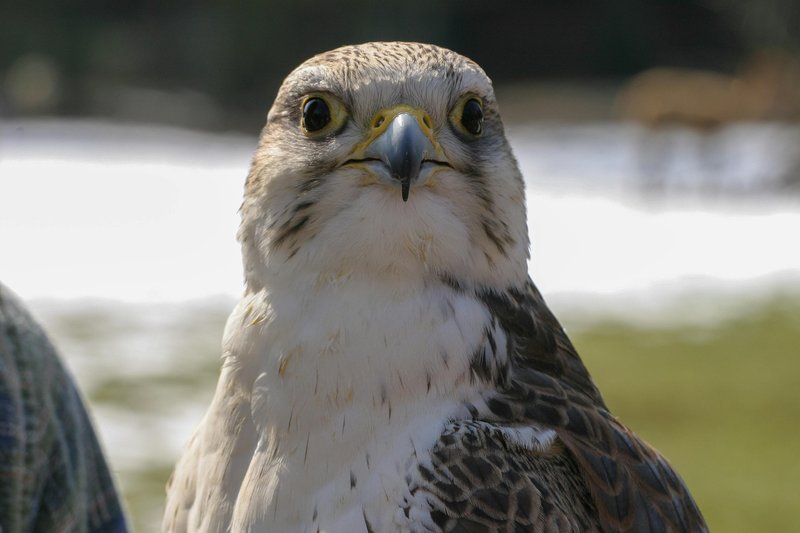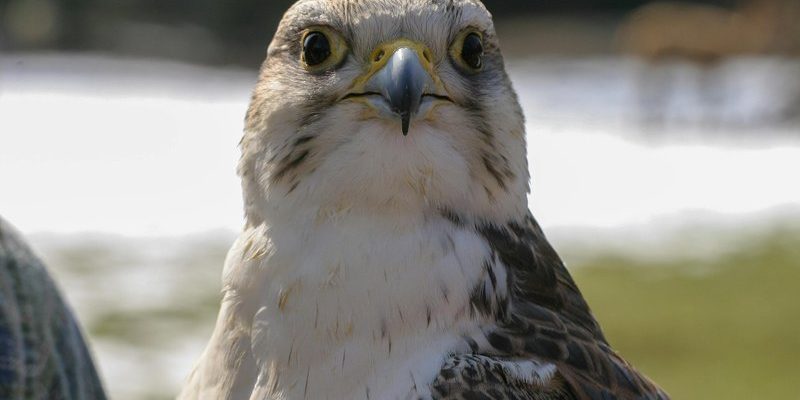
Living primarily in the Arctic, the Gyrfalcon is a rare sight for most of us. Its beauty and grace in flight are matched only by its impressive hunting prowess. Whether you’re a seasoned birdwatcher or just curious, exploring the intricate characteristics of the Gyrfalcon can enhance your understanding of nature’s wonders. So, let’s explore ten fascinating facts about this remarkable falcon that might surprise you.
1. The Largest Falcon Species
The Gyrfalcon holds the title of being the largest falcon species in the world. When you picture a falcon, you might think of a sleek, smaller bird, but the Gyrfalcon breaks that mold. These birds can weigh anywhere from 2 to 4.5 pounds, and their wingspan can reach up to 55 inches! That’s enough to make them look like a small eagle when they’re gliding through the air.
What’s even more interesting is their size variations. Gyrfalcons come in three color morphs: white, gray, and dark. The white morph, often referred to as “tundra” Gyrfalcons, are particularly stunning against the snow. Their size and beauty make them a favorite among birders and wildlife enthusiasts alike.
2. Masters of Arctic Survival
You might be wondering, what’s it like to survive in the frigid Arctic environment? Gyrfalcons are built for it. Their dense plumage helps insulate them against the cold, and their large body size provides them with the necessary heat retention. Unlike birds that migrate to warmer climates, Gyrfalcons are permanent residents of the Arctic.
They’ve adapted their hunting strategies to the cold, relying on a diet primarily composed of birds—like ptarmigans and seabirds—which are also suited to the harsh conditions. When food is scarce, these falcons can even switch to hunting small mammals like lemmings. This flexibility in their diet is a key part of their survival strategy in such a challenging habitat.
3. Incredible Hunting Skills
Here’s the thing: Gyrfalcons are not just beautiful—they’re also ruthless hunters. Their hunting technique is fascinating to observe. They often use a combination of speed and stealth to catch their prey. With diving speeds that can exceed 60 miles per hour, they can close in on their targets in the blink of an eye.
Gyrfalcons have exceptional eyesight and can see the slightest movements from great distances. They tend to hunt in open areas where they can spot their prey easily. This ability to locate birds and other small animals makes them highly efficient hunters in their Arctic domain.
4. Unique Breeding Behaviors
Breeding season for Gyrfalcons is a unique time. They typically mate for life, which is something not all birds of prey do. When it’s time to breed, Gyrfalcons return to their nesting territory, often using the same nest each year. These nests are often built on cliffs or in large trees, safe from many predators.
The female lays about 3 to 5 eggs, which she incubates for around 30 to 35 days. Interestingly, females are larger than males and therefore take on most of the incubation duties. The male, on the other hand, provides food for the family during this critical period, showcasing the dynamic roles both partners play.
5. Conservation Status and Challenges
While Gyrfalcons are generally stable as a species, they’re not without their challenges. The harsh Arctic environment poses threats like climate change, which affects their habitat and food sources. As temperatures rise, the availability of their prey can dwindle, making it tougher for these magnificent birds to survive.
Conservation efforts are important for Gyrfalcons. Organizations and researchers often monitor their populations to ensure they remain healthy. Protecting their habitats from human encroachment and pollution is also vital to ensure these birds continue to thrive in their natural environment.
6. Cultural Significance
Gyrfalcons have held a special place in various cultures throughout history. In medieval times, they were symbols of nobility and were often used in falconry, a popular sport among royalty. Owning a Gyrfalcon was a status symbol, representing power and prestige.
Even today, they are revered in many Arctic indigenous cultures. For these communities, the Gyrfalcon is more than just a bird; it symbolizes strength and endurance. Their presence is celebrated in local folklore, reflecting the deep connection between the natural world and human culture.
7. A Bird of the North
The Gyrfalcon is primarily found in the Arctic regions of North America, Europe, and Asia. While they usually prefer remote areas, some populations migrate to temperate zones during the winter months. Their adaptability to different environments is part of what makes them so fascinating.
In North America, they can be found in places like Alaska and parts of Canada. To see one in the wild is a privilege, as their elusive nature means they’re not always easy to spot. Birdwatchers often flock to these regions during migration seasons, hoping to catch a glimpse of this stunning falcon.
8. Communication and Vocalizations
While most people think of birds as quiet creatures, Gyrfalcons are surprisingly vocal. They communicate through a series of sounds, including high-pitched calls and low chattering noises. These vocalizations are essential during breeding season and help establish territory.
You might not realize how crucial these sounds are. They serve to attract mates and defend nesting areas from intruders. Listening closely to their calls can add another layer of enjoyment for birdwatchers, making every outing a little more enchanting.
9. Speed and Agility in Flight
The Gyrfalcon’s flight is a sight to behold. Their powerful wings allow them to maneuver through the air with grace and speed. Whether they’re soaring high above the tundra or darting between obstacles, their agility is remarkable.
In fact, they can execute sharp turns and dives with impressive precision, making them formidable hunters. This combination of speed and maneuverability makes them one of the top birds of prey in their environment. Watching a Gyrfalcon in flight is an unforgettable experience that showcases the beauty of nature’s design.
10. Conservation Success Stories
Although the Gyrfalcon faces challenges, there have been several success stories in conservation efforts. Specific regions have seen recoveries in their populations due to habitat protection and responsible hunting practices. These efforts show that with dedication and awareness, we can make a difference.
Supporting local conservation programs and wildlife organizations can help ensure future generations will also appreciate these magnificent birds. By protecting their habitats and raising awareness about their needs, we can help Gyrfalcons thrive in their natural landscapes.
In summary, the Gyrfalcon is a bird that embodies the wild beauty of the Arctic. From their impressive hunting skills to their cultural significance, they capture our fascination and respect. Understanding these unique characteristics can deepen our appreciation for the natural world and remind us of the importance of conservation. The next time you think about falcons, remember the Gyrfalcon—a true marvel of nature.

